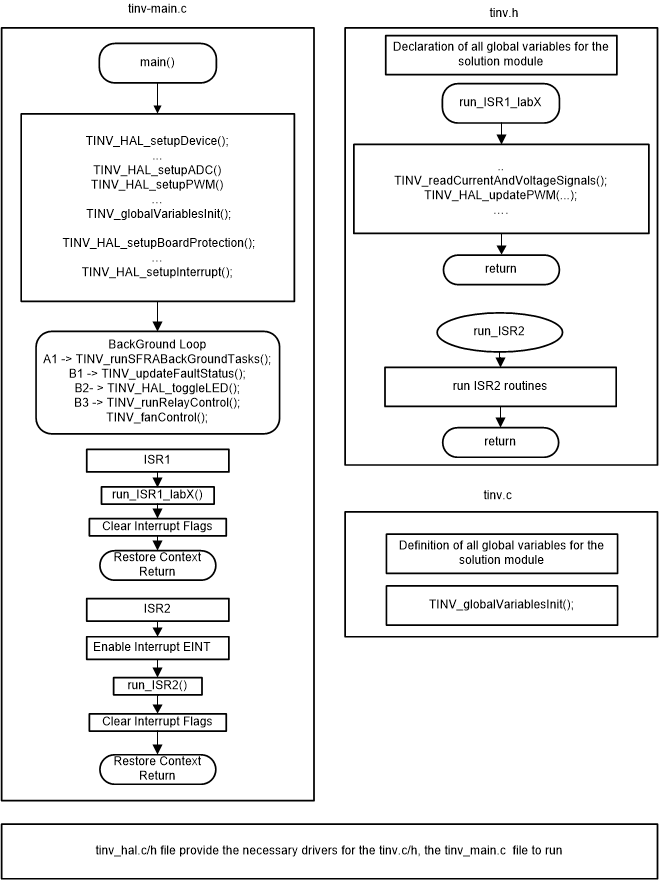JAJU510H March 2018 – December 2022
- 概要
- リソース
- 特長
- アプリケーション
- 5
- 1System Description
- 2System Overview
-
3Hardware, Software, Testing Requirements, and Test Results
- 3.1 Required Hardware and Software
- 3.2 Testing and Results
- 4Design Files
- 5Trademarks
- 6About the Authors
- 7Revision History
3.1.2.1.3 Interrupts and Lab Structure
The project consists of two ISRs (ISR1 and ISR2) with ISR1 being the fastest and non-nestable ISR. ISR1 is reserved for the control loop and the PWM update. ISR1 is triggered by the PRIM_LEG1_PWM_BASE → EPWM_INT_TBCTR_U_CMPC event.
ISR2 is triggered by CPU Timer INT which is initiated by an overflow on CPU timer. It is used to run housekeeping functions such as doing a running average on the currents and voltage signals to remove noise and running the slew rate function for commanded references.
 Figure 3-1 Software Flow Diagram
Figure 3-1 Software Flow DiagramThe software of this reference design is organized in seven labs, Table 3-3 lists the labs and how they have been tested. All the labs can be run on the C28x Main CPU or the Control Law Accelerator.
| LAB NUMBER | DESCRIPTION | COMMENTS | TEST ENVIRONMENT |
|---|---|---|---|
| 1 | INV: PWM and ADC check | Test the PWM driver, ISR structure and execution rate, can be run on a control card. Unit test protection mechanisms. Test ADC mapping and reading of conversion data. | Control Card |
| 2 | INV: Open loop check | PWM Check, ADC check, Protection Check, inverter mode DC bus connected and resistive star network as load | Control Card + Power Stage Hardware |
| 3 | INV: Closed Current Loop, Resistive load connected at AC | Control Card + Power Stage Hardware | |
| 4 | INV: Closed Current Loop, Grid connected test inverter mode | Control Card + Emulated power stage under Hardware In-the Loop | |
| 5 | PFC: Three phase AC source , Resistive load at DC, open Loop check |
| Control Card + Power Stage Hardware |
| 6 | PFC: Closed Current Loop, Resistive load connected at DC, three phase AC ? | Control Card + Power Stage Hardware | |
| 7 | PFC: Closed Voltage loop + Current Loop , Resistive load connected at DC, three phase AC ? | Control Card + Power Stage Hardware |